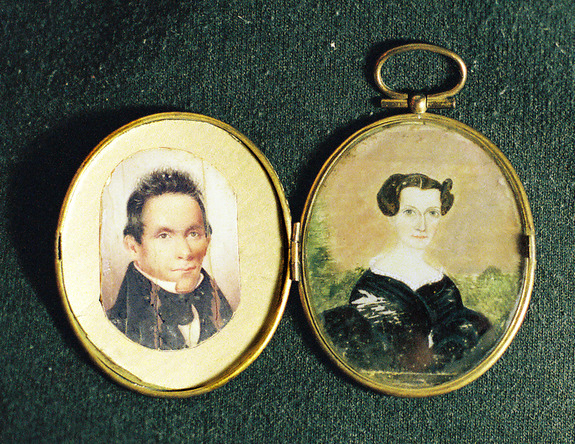Secrets of NationPosted in Articles, History, Media Archive, Oceania, United States, Women on 2016-07-26 01:20Z by Steven |
Inside Story
2016-07-15
Ann McGrath, Professor of History, Director of the Australian Centre for Indigenous History
Australian National University, Canberra, Australian Capital Territory
Middle ground: detail from Bartering for a Bride, or The Trappers Bride, by Alfred Jacob Miller, c. 1845. Wikipedia Commons |
The buried secrets of Australia’s frontier share features with encounters in the United States, writes Ann McGrath
By the 1960s, when I was growing up there, Queensland had become skilled at burying the Aboriginal past, and Queenslanders spoke about its traces in hushed tones. As a child, I wondered why. I recall a particular day when my grandfather Joe whispered that some of his neighbours had a “touch of the tarbrush.” “What does that mean?” I had no clue. He told me that it meant Aboriginal ancestry. I was flummoxed by these comments, which seemed out of character. A tram driver for most of his working life, Joe had refused promotion because the new job would have involved punishing people who could not afford to pay. A son of the Great Depression, he respected hardworking men and women. I had never before heard him say anything that sounded discriminatory or racist.
Only after years of archival research into Australian history did I realise why it was necessary to speak about such topics in a whisper. Unions between Aboriginal women and white men were against the law. You did not want the police to hear. You did not want your neighbours to suffer the shame and the punishment of fines or incarceration. Where Joe grew up in north Queensland, white men went to jail for cohabiting with Aboriginal women. Worse, with marriage prohibited and Aboriginal marriage law not recognised, their children were classed as “illegitimate.” Aboriginal wives and children were taken away.
Keeping these “secrets of nation” as family secrets became common sense, and hence a deeply ingrained practice. Not only had Aboriginal people supposedly just “gone” from the urban and rural landscape with no heroic battles, but according to what we were taught in primary school, it was as if they had never even shared the same spaces. Let alone fallen in love, married, and loved their children.
When I became a historian, I started to investigate the history of race and colonialism, and eventually came to the topic of intermarriage across colonising boundaries. The history of love, above and beyond other themes, seemed to promise gendered clues that might help people understand what lay beneath the surface of history, clues to buried, intimate secrets – the private stuff that makes our nations tick…
Read the entire article here.

